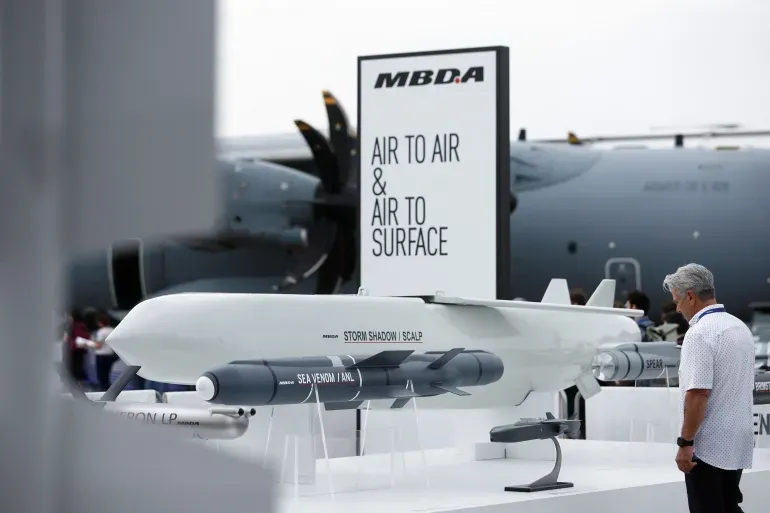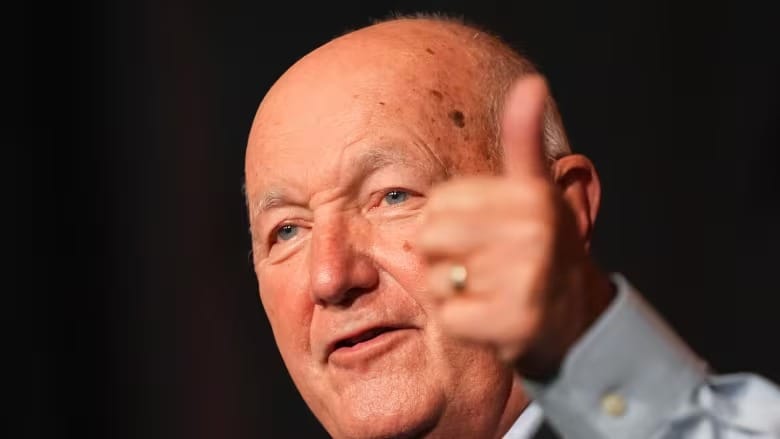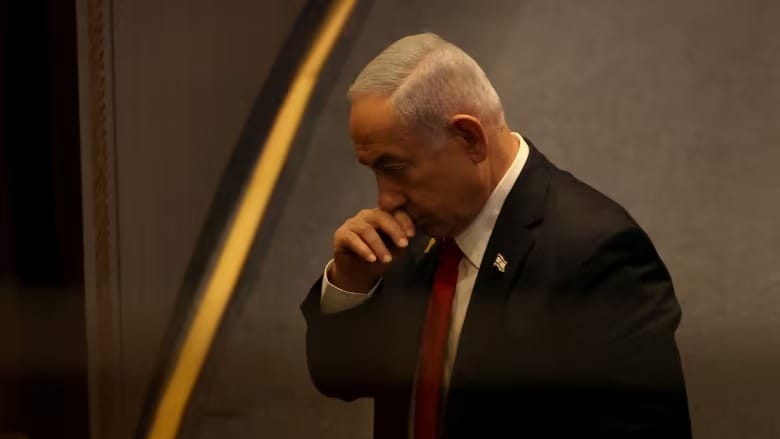Why are Storm Shadow missiles a new flashpoint between Putin and the West?
Could the lifting of restrictions of long-range missiles lead to wider escalation between Russia and the West?

The United States and United Kingdom have agreed to review Ukraine's request to lift restrictions on using their long-range missiles, including Storm Shadow missiles, in Russian territory.
The potential approval of Ukraine's request has triggered a stern response and threat from Russian President Vladimir Putin. Here’s a look at these long-range weapons and their role in the current escalation in rhetoric amid Russia’s ongoing conflict with Ukraine.
What are Storm Shadow missiles?
The Storm Shadow is a long-range, air-launched cruise missile, meaning it is launched from military aircraft rather than from the ground. These missiles can strike targets up to 250 kilometers (155 miles) away.
If used from Ukraine's airspace, Storm Shadow missiles could reach deep into Russian territory. Should the UK, which provides these missiles, lift the current restrictions—initially imposed to limit their use within Ukrainian borders—targets such as Kursk, Millerovo, and Rostov in Russia could become more vulnerable.
Developed through a Franco-British collaboration and manufactured by a joint venture that includes Italy, each Storm Shadow missile costs around $1 million. They are capable of damaging or destroying Russian military infrastructure, including weapon storage facilities and bunkers. They might also help mitigate the impact of Russia’s military strikes on Ukraine's civilian infrastructure, according to Keir Giles, a senior consulting fellow at the London-based Chatham House think tank.
The UK confirmed in May 2023 that it had sent Storm Shadow missiles to Ukraine, but these were provided with the condition that Ukraine use them only within its own territory.
A very substantive and long conversation with U.S. Secretary of State Antony Blinken @SecBlinken and UK Foreign Secretary @DavidLammy, during which we discussed all key issues.
— Volodymyr Zelenskyy / Володимир Зеленський (@ZelenskyyUa) September 11, 2024
It is important that Ukrainian arguments are heard. This includes the long-range weapons, the supply… pic.twitter.com/uZWIUVQo95
What is Zelenskyy asking for?
President Volodymyr Zelenskyy has been advocating for months for his allies to permit the use of long-range missiles to target locations inside Russia. During a Ukraine Defense Contact Group (UDCG) meeting on September 6, he stated, “We need to have this long-range capability, not only on the divided territory of Ukraine, but also on the Russian territory, so that Russia is motivated to seek peace.”
In July, Zelenskyy sought clarification from newly elected British Prime Minister Keir Starmer about Kyiv’s use of the Storm Shadow missiles.
Would long-range rockets make a significant difference for Ukraine?
Long-range missiles could provide Ukraine with enhanced tactical capabilities, such as striking distant targets. However, experts caution that they might not be sufficient to decisively defeat Russia.
“We shouldn’t view any single weapon system as a miracle solution that will radically change the war,” said Giles.
What is the position of the US and UK?
To date, the US and UK have not allowed Ukraine to use long-range missiles against targets within Russia, primarily due to concerns about escalating the conflict. In August, White House National Security Communications Advisor John Kirby dismissed claims that the West and NATO are at war with Russia as “a funny bit of Putin propaganda.”
US Secretary of State Antony Blinken and UK Foreign Secretary David Lammy visited Kyiv on Wednesday, announcing an additional $1.5 billion in economic aid for Ukraine. Zelenskyy requested the lifting of restrictions and thanked the leaders on X for their support, emphasizing the importance of addressing the issue of long-range weapons.
Blinken indicated that Washington would consider this request “with urgency,” likely discussing it further when US President Joe Biden meets with Starmer on Friday. “We have adjusted and adapted as needs changed, as the battlefield has changed, and I have no doubt that we’ll continue to do that,” Blinken added.
This review follows allegations that Iran has supplied short-range missiles to Russia, which Tehran denies.
What does Russia say?
Russian President Vladimir Putin warned on Thursday that if Western countries permit Ukraine to use long-range missiles in Russian territory, it would amount to direct involvement in the war. “It will mean nothing less than the direct involvement of NATO countries, the United States, and European countries in the war in Ukraine. This will be their direct participation, and this, of course, will significantly change the very essence, the very nature of the conflict,” Putin told Russian state media.
Putin suggested that Russia would need to take “appropriate actions” in response to this potential escalation, though he did not specify what these measures might entail. Experts anticipate that this could lead to further escalation. Earlier in the month, Russia announced changes to its nuclear doctrine, though details were not disclosed.
How could Russia respond?
Putin’s threats have raised concerns about possible escalations, both within and beyond Ukraine. “A typical Russian response to any unwelcome development is to intensify its attacks on Ukraine,” Giles noted.
Putin’s vague reference to “appropriate actions” might include measures other than direct military conflict or nuclear attacks, such as increased sabotage activities across Europe or support for Western “terror” groups, which are seen as “Russian-backed proxies” involved in various attacks and intimidation.
Russia might also target Western government personnel stationed outside Europe or expel additional Western diplomats beyond the six British diplomats accused of spying on Friday.
What will happen next?
According to Giles, “The US fear of escalation and reluctance to deter Russia allows Russia and its allies to escalate at will.”
Samantha de Bendern, an associate fellow at Chatham House, added, “If you show Russia you are strong and determined, Russia will not escalate,” though she acknowledged that escalation remains a possibility. She noted that Putin has been threatening escalation in response to Western involvement since the conflict began in February 2022.
“The West has provided Ukraine with incremental support, offering just enough to sustain it rather than to enable full liberation of its territory,” she explained. “The West needs to understand where the real red line is, and it’s not about supplying more weapons to Ukraine.”





